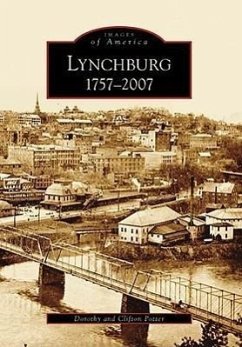In the spring of 1757, the Lynch brothers established a ferry across the James River to transport settlers on their way to the Ohio Valley. Within a decade, the settlement clustered around the ferry house became known as Lynchburg. For a century, the city was regarded as one of the most important transportation centers in the Upper South, although its real fortune lay in tobacco. After the Civil War, Lynchburg evolved into a manufacturing center with a broadly based economy. As it marks its 250th anniversary, Lynchburg has become a focus for higher education and tourism in Central Virginia. From the development of the modern camera to the current digital revolution, this photographic record of Lynchburg and the surrounding counties' growth is rich, varied, and traces their transformation almost from their birth to the present day.
Bitte wählen Sie Ihr Anliegen aus.
Rechnungen
Retourenschein anfordern
Bestellstatus
Storno


